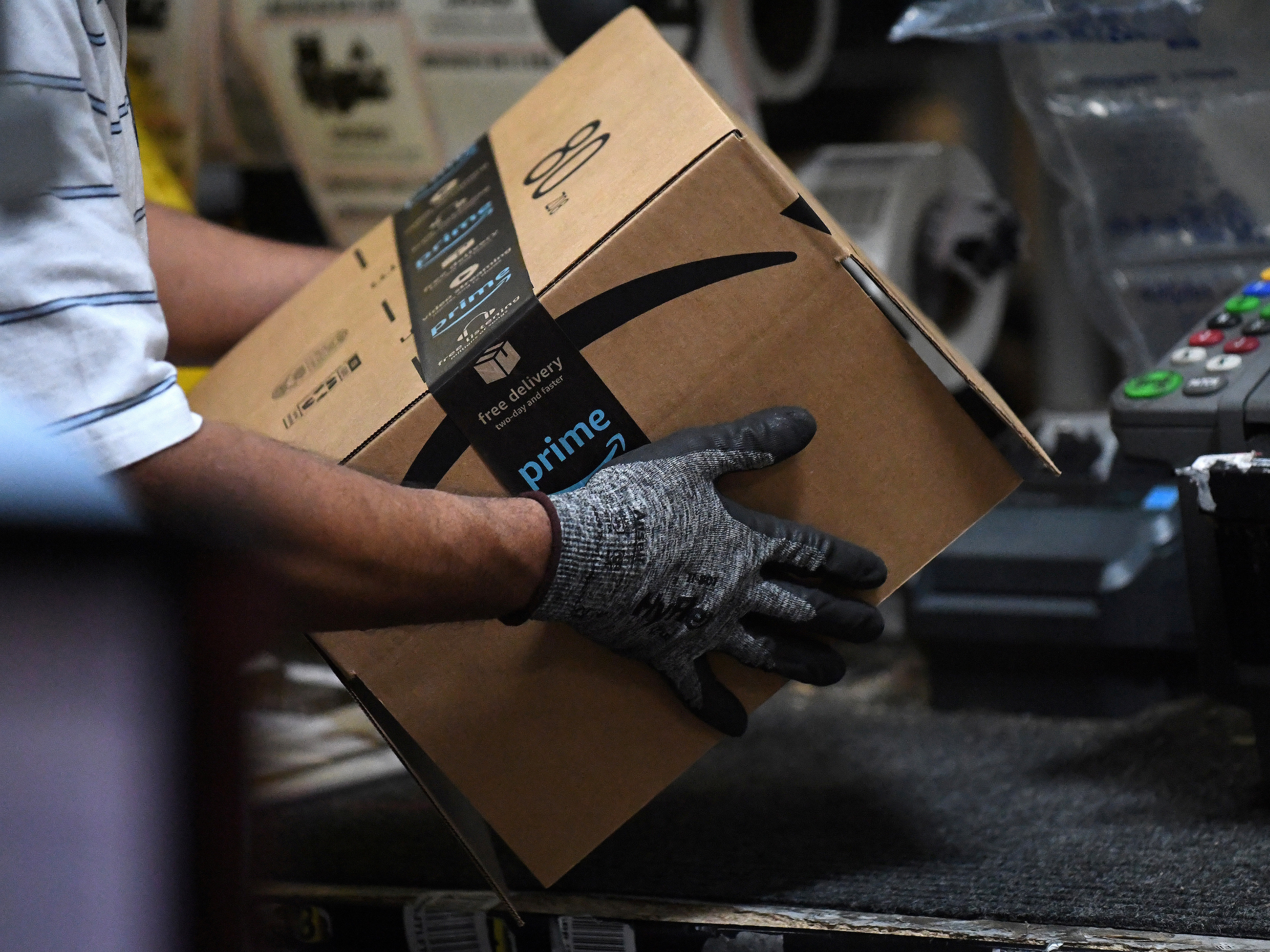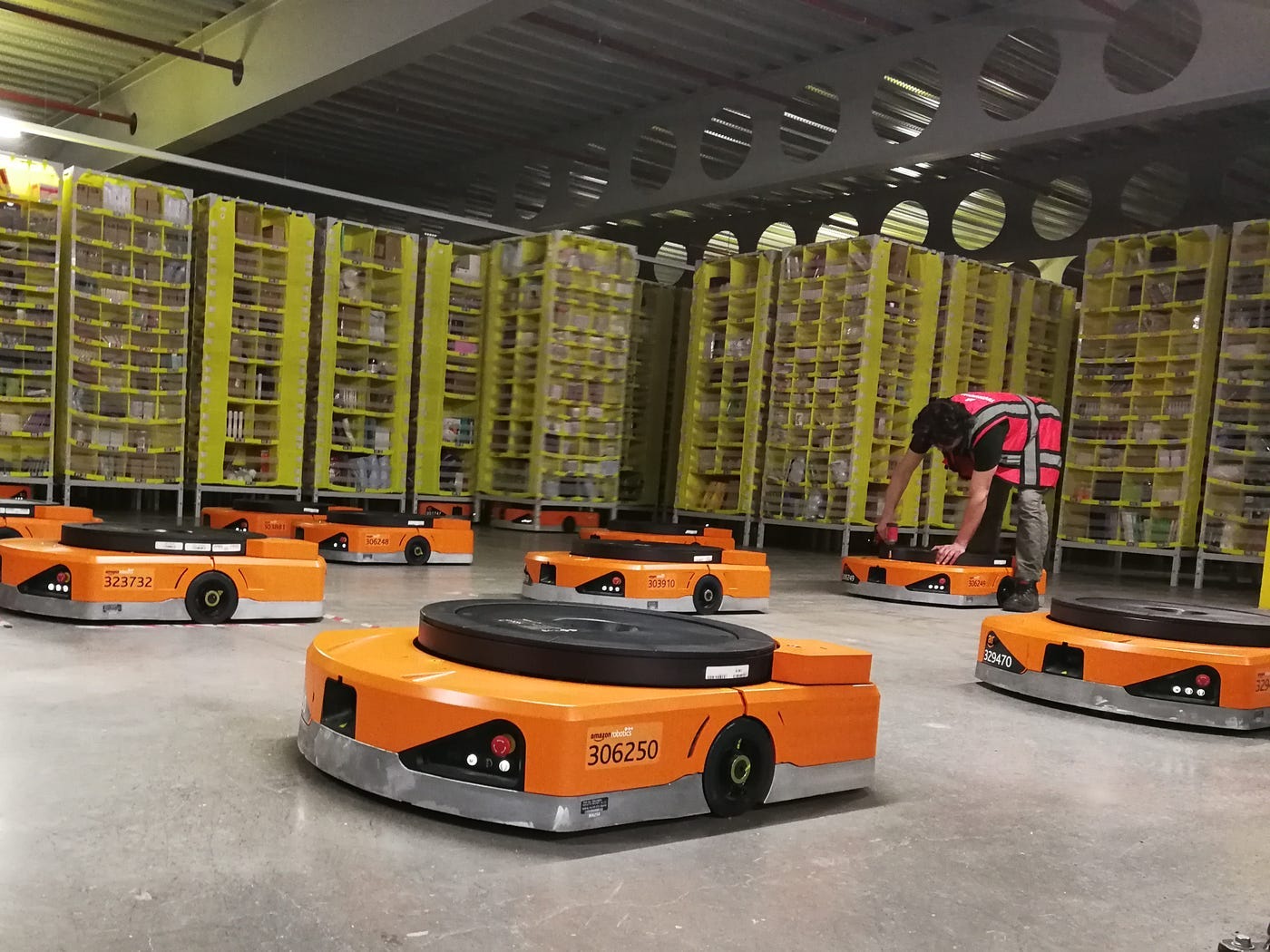
REUTERS/Clodagh Kilcoyne/File Photo
- Leaked data obtained by investigative journalism site Reveal about injury rates inside Amazon warehouses show the company has publicly downplayed how dangerous its warehouses are for workers.
- The data shows injury rates have climbed every year from 2016 to 2019, that robotic warehouses on average clock more injuries than non-robotic ones, and injury rates increase significantly during busy periods including Prime Day and Amazon’s “peak” holiday season.
- Amazon did not comment directly on the report, but Reveal’s findings directly contradict the firm’s previous public statements on worker safety.
- Visit Business Insider’s homepage for more stories.
A new bombshell report details the burgeoning problem Amazon has with injuries in its warehouses, an issue the retail giant has consistently downplayed.
A whistleblower handed injury data from Amazon’s US warehouses (called “fulfillment centers” or FCs by the company) to the Center of Investigative Journalism’s outlet Reveal.
The data breaks down how many injuries occurred weekly across 150 Amazon warehouses in the US between 2016 to 2019. A serious injury is defined as one that requires time off work or changes to the job.
The leaked data shows Amazon logged 14,000 serious injuries across 150 US warehouses in 2019. This was 33% higher than Amazon’s injury rate in 2016, and almost twice the industry standard.
Injury rates per 100 workers have increased every year since 2016.
The data also showed that injury rates are higher on average in warehouses which have operating robots, and that injuries spike during the busy peak season ahead of Christmas and on Amazon's bonanza shopping events Prime Day and Cyber Monday.
The data also showed that in the most common type of warehouse (which processes small- to medium-sized items) the average rate of injury was 50% higher in warehouses with robots than those without from 2016 to 2019.

Isobel Asher Hamilton/Business Insider
This data undercuts some of Amazon's public messaging about safety in its warehouses.
Amazon's CEO of consumer business Jeff Wilke told PBS Frontline last year that robots "make the job safer."
Reveal's investigation suggests however that the introduction of robots meant production quotas for workers in the warehouses have increased, putting more strain on the workers and increasing the injury rate.
One worker in a warehouse with robots said workers previously were expected to process 100 items per hour, but that went up to 400 after robots were introduced.
An anonymous former senior Amazon safety manager told Reveal the extra strain on workers in robotic warehouses became apparent fairly quickly. "We realized early on there was an issue. It was just – you're already moving that way at lightspeed, so how do you take a step back and readjust?" they said.
In response to a Business Insider investigation last year into what it's like to work during Amazon's holiday season — known internally as "peak" — an Amazon spokesperson asserted: "We know for a fact that recordable incidents do not increase during peak."
Reveal's data appears to contradict this. It also showed that in 2019 that the weeks in which Prime Day and Cyber Monday fell had the highest injury rates of the entire year.
"The stats prove what everybody knew — Amazon, quite literally, will break your back just to continue to push workers beyond what's humanly possible," Christy Hoffman, general secretary of the international UNI Global union, told Business Insider. "This is just the latest example of why workers need unions to negotiate safer workplace rules," she added.
Reveal said Amazon did not respond to detailed requests for comment. Amazon did not immediately respond to request for comment from Business Insider.
A spokesperson gave this statement to Reveal: "Nothing is more important than the health and safety of our teams. So far in 2020, we have committed over $1B in new investments in operations safety measures, ranging from technology investments in safety to masks, gloves, and the enhanced cleaning and sanitization required to protect employees from the spread of COVID-19."
Amazon workers told Business Insider at the onset of the pandemic that the company's enforcement of its safety protocols to prevent the spread of COVID-19 inside its warehouses was sporadic and inadequate, and left workers feeling unprotected and vulnerable.
Do you work at Amazon? Got a tip? Contact this reporter at [email protected] or [email protected].

